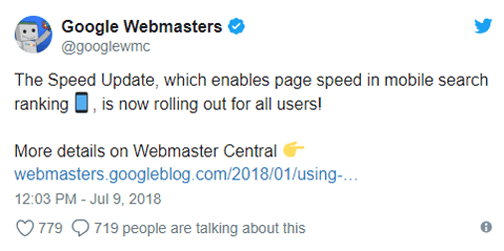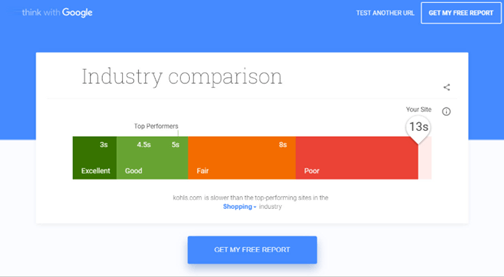Mobile SEO and Speed: Google’s Latest Update
Earlier this year Google announced that on the 9th of July they would be implementing a significant change in how it ranked websites for mobile searches.
The adeptly named “Speed Update” now means that Google will include the mobile site speed as one of it’s considerations for which webpages are ranked in the search results.

Forgetting the slightly ironic slow nature of this post, Google’s ‘need for speed’, specifically page speed, is nothing new. It has been using speed as a factor to rank desktop results since 2010, as well as being behind the sustained push to see the adoption of AMP pages across the mobile web.
Regardless of this the impact of page speed has been grossly underestimated historically.
This is further emphasised when you consider that the number of people accessing the internet from their device has risen from 36% in 2011 to 73% in 2017. Or that 53% of userswill bounce from a page that takes longer than 3 second to load.
And despite the fact that superfast 5G is just around the corner for some, many still rely on 3G connections to load the average mobile web page, which are now around 91% the size of the average desktop web page.
Deciphering Google’s Mobile SEO Rationale
Even before this announcement, we had anticipated that 2018 would be the year that mobile indexingcame to the forefront. However, the main issue in attempting to prepare clients for the arrival of the “Speed Update” has revolved purely around deciphering Google’s vague information on the subject.
Chiefly, what exactly constitutes as a slow page? Or how do we determine whether a page would be impacted by this algorithm update?

The natural response from Google has been to tell us as little as possible to motivate all companies to attempt to get their pages as fast as possible, just to prevent any chance of the algorithm having a negative impact on their websites.
Google has since moved to reassure the community that the “Speed Update” will only be targeting the slowest mobile sites.
This has been supported thus far from our own reporting on client websites, with our organic mobile rankings not seeing any significant decreases or ecommerce revenue drops but that might be due to our own best practise on page speed (mic drop).
Yet, it will be important to continue to keep a close eye on Google Analytics, Google Search Console, as well as any increases in mobile paid search results to stay on top, as we do expect Google to continue to raise the minimum mobile page speed bar in the future.
The SEO eCommerce Impact
The fact that Google took the highly unusual step to provide a warning should serve as an indicator that it wants websites to address their speed issues.
Particularly those who have been relying on previous success and have been too lazy to address website issues which are slowing down the mobile web. The hope is that the “Speed Update” will suddenly force companies to prioritise Google’s best practise on their mobile eCommerce SEO.
And if they do not, then the implications are likely to be substantial for all businesses which rely on organic mobile Google results for their traffic and revenue. For those who do, there is potential to use the opportunity to move ahead of competitors and secure mobile revenue.
Follow my contributions, to the blog to find out more about SEO, or sign up to the ThoughtShift Guest List, our monthly email, to keep up-to-date on all our blogposts, guides and events.
